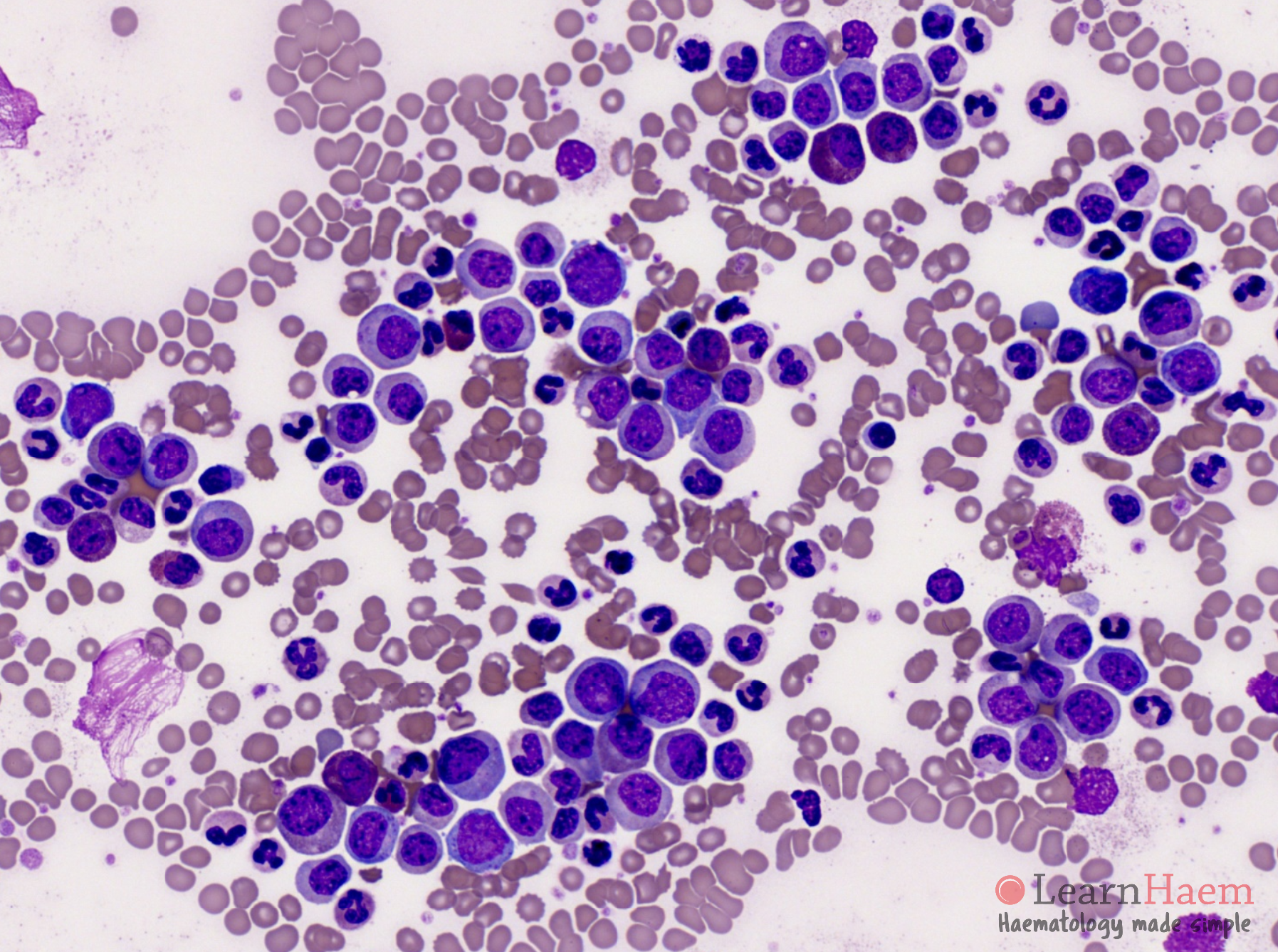Chronic myeloid leukemia is a proliferative disorder characterized by the dysregulated production and uncontrolled proliferation of mature and maturing granulocytes. It is characterized by the chromosomal translocation t(9;22)(q34.1;q11.2), which results in the formation of the Philadelphia (Ph) chromosome and the BCR-ABL1 fusion gene.
Diagnostic Criteria (WHO 2016)
- Peripheral and/or bone marrow blast less than 10%
- Demonstration of the Philadelphia chromosome or the underlying t(9;22) translocation by conventional cytogenetic techniques


0 x
Blood Film Features:
- Leucocytosis involving various stages of granulocytic maturation
- Peaks in myelocytes & neutrophia
- Blast less then 10% (Usually less than 2%)
- Platelets may be normal or increased
- Eosinophilia and Basophilia
- No significant dysplasia
- Cytochemistry: neutrophil alkaline phosphate score low


0 x
Bone Marrow Features:
- Hypercellular bone marrow
- Myeloid:Erythroid (M:E) ratio increased
- Granulocytic hyperplasia involving various stages of maturation
- Blast less than 10% (Usually less than 5%)
- Small megakaryocytes with hypolobulated nuclei
Other features to look for:
- Pseudo-Gaucher cells
- Sea blue histiocytes


Leave A Comment